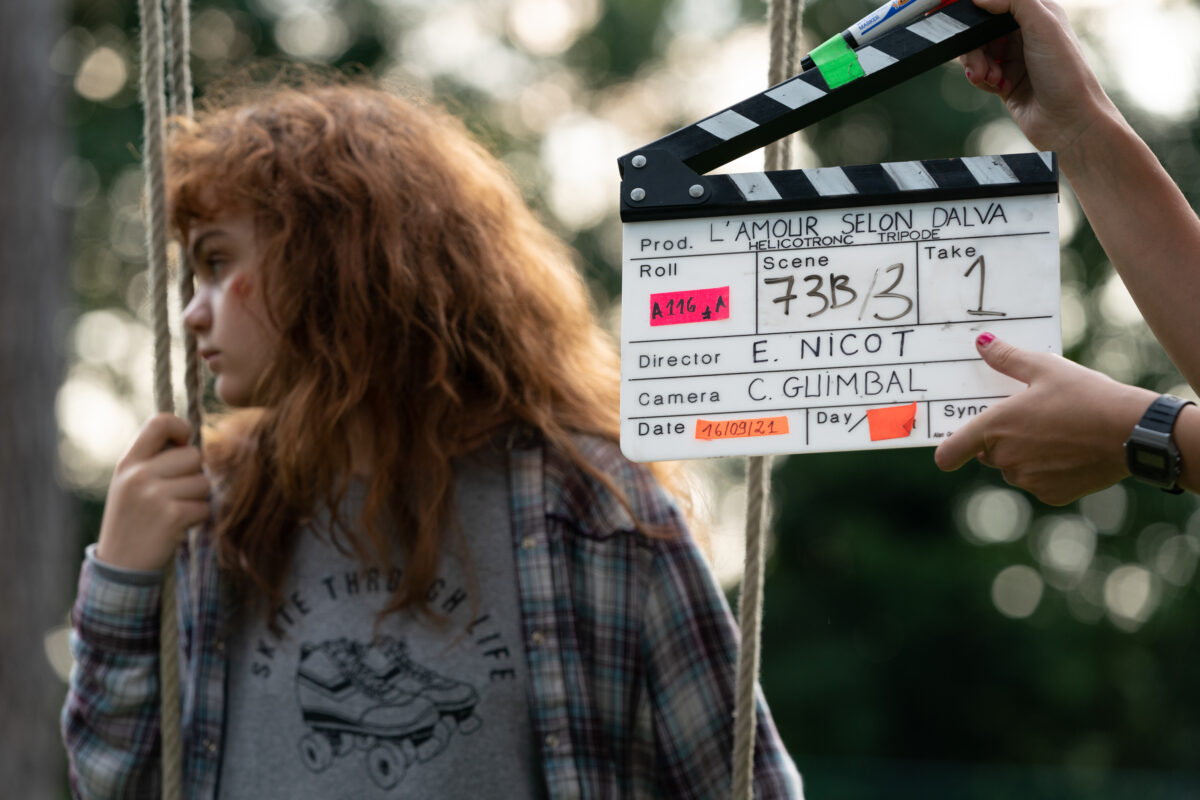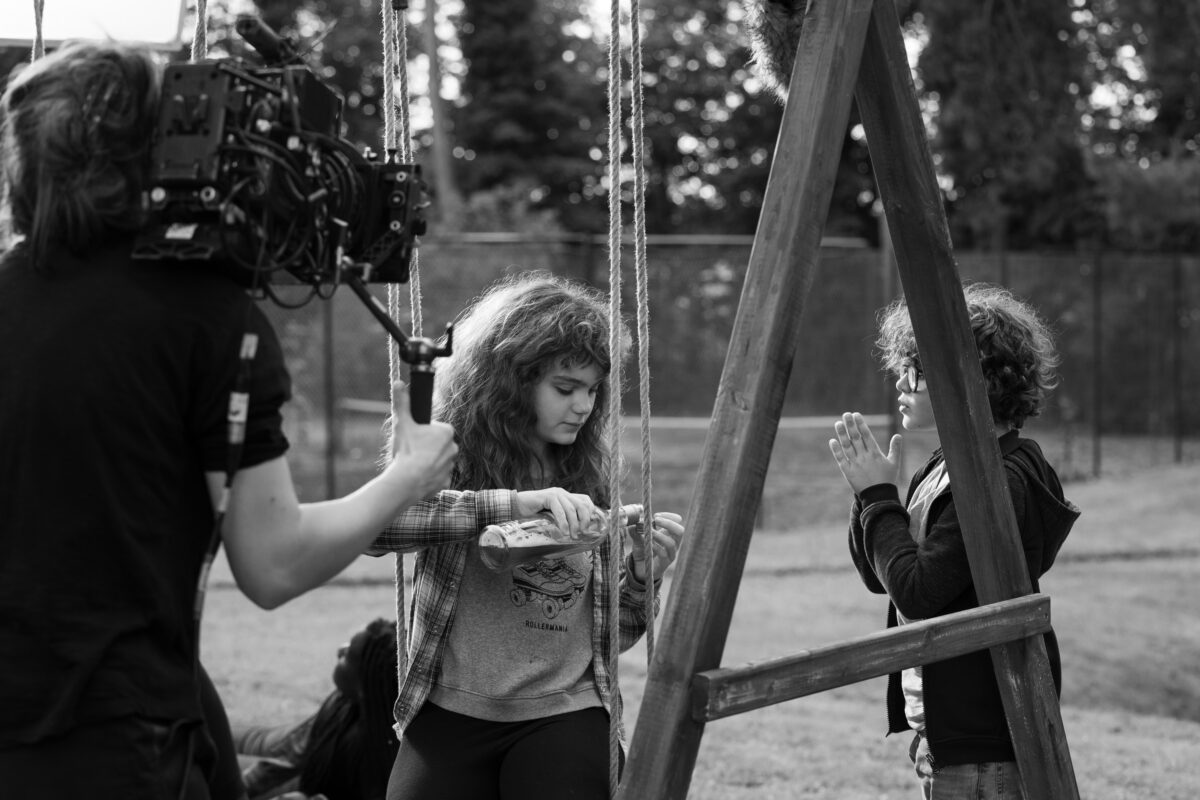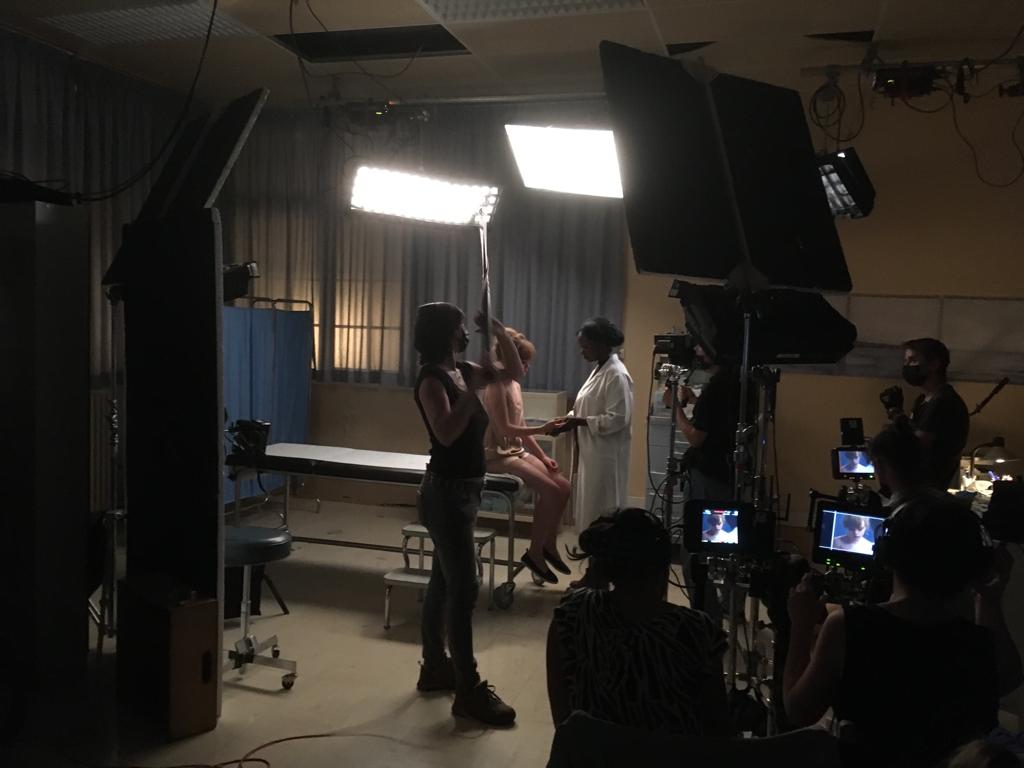Caroline Guimbal on her debut film Dalva.

Emmanuelle Nicot’s debut feature film Love according to Dalva, also known as, Dalva follows 12-year-old Dalva (excellently portrayed by Zelda Samson), as she navigates her new life in social housing after being taken away from her abusive father. Although only 12, Dalva acts as if she is a woman. She views other women throughout the film as mere objects, even attacking her own mother in a heart-breaking scene. Through her newly formed friendship with roommate, Samia (Fanta Guirassi)and her bond with social worker, Jayden (Alexis Manenti), Dalva slowly comes to terms with her denial and begins to embrace adolescence.
Intimately captured in warm colourful hues by DP Caroline Guimbal in her feature debut, (for which Guimbal was awarded the Golden Frog at Camerimage in the Cinematographers’ Debuts Competition) Dalva is a gut-wrenching portrayal of childhood trauma.
Where did you train as a cinematographer?
Emmanuelle and I both studied at Institut des Arts de Diffusion in Brussels. It’s a school that specializes in cinema. I studied image and Emmanuelle directing. We worked together on her short film at school and then again after school, and we are also friends so we understand each other very well.
Did Emmanuelle already have you in mind for Dalva?
Yes. I followed the whole process, from when Emmanuelle was writing the film. I already knew a lot about what was happening. It’s not the first time that she has worked on that subject. The incest aspect of course, but the theme of denial and the fact that people don’t want to see what’s going on.
What were your initial conversations about the look of Dalva? What did Emmanuelle want to achieve?
The first discussions we had were about the psychological and the emotional evolution of Dalva. It was about reading the whole script and speaking about all those movements for me to really understand Dalva. It wasn’t all about image. It was more important for the image to be close to what she feels, a really sensitive image and discover the reality through her prism.
What research was involved?
Emmanuelle went to a few social care homes and the characters were inspired by people she met there. Her father also worked as a social worker. We shot in a mansion, a really charming old house and that house was inspired by the house her father worked at.
Did look at any creative references?
We looked at Andrea Arnold’s American Honey. That was the main reference. Emmanuelle doesn’t work with a lot of references. She knows and understands precisely the psychology of her characters, so she works from what she feels and the image with that fact in mind. We have worked together for a long time, so we have had the chance to discuss what she likes and doesn’t like, so it’s a long process.

What was your approach to lighting for storytelling purposes?
The idea for the light was to have a sunny atmosphere. Emmanuelle didn’t want the social care home too gloomy. The subject is hard enough, she didn’t want to add drama to that situation. The idea was to feel the warmness. We had discussions with the decoration team. We wanted to make the social care home realistic and not unrealistic, close to reality, so it was a balance. Sunny, but also sometimes light-dark atmospheres. We had to see the face and facial expressions of the actors, so never in total darkness.
What were the challenges of working with a younger cast?
They are very young and non-professional actors, so it was really important for them to be used to me and the camera. We had always a sight on how to work with them, such as what freedom and framework they would need.
We spent a lot of time in rehearsals to get used to each other and so they could meet and prepare. It was a long process. Emmanuelle and I had to understand how to film Dalva so that she looked as much like a woman as possible, in reality, she’s only 11 years old.

Is there lots of room for creative freedom?
Each morning we spent a long-time planning before shooting, to discuss the cutting and what we planned to do. Then it was important for Emmanuelle not to think about the technical aspect during the day, so he could focus on the acting. But I could improvise with the camera sometimes depending on the scene and the feeling. I could change the direction a little and the focus puller had to adapt. She is talented. I usually work on documentaries and for me it’s important to have that liberty. I shot with the Alexa Mini so I had a lightweight camera to move.
We often see Dalva occupying the frame which gives a feeling of confinement. Could you tell me more about your framing choices?
Emmanuelle likes to film in close-up. Not only in close-up, but to feel that the viewer is closer to Dalva physically. There were discussions about how to film those close-ups. The idea was that the camera was free to be and close to all the vibrations of Dalva, to feel her shivers. It was mostly handheld camera in order to be free to move.
In the first part of the film, the viewer should feel Dalva’s denial of the whole situation, and that she cuts herself off from the outside which frightens her. We worked on the off-camera and characters that we left out of focus, or even out of frame, sometimes for a long time. And then, as Dalva gradually opens up and the image adapts to this change. The film was shot in 4:3 to be closer to Dalva and not the surrounding.

The framing shifts noticeably after Dalva attacks her schoolfriend…
Yes, that’s a big moment when she changes and after the prison scene too. It’s the idea of freedom and for the very first time she’s feel like she is a part of a group. We had to feel somehow the carefree childhood.
There is a very powerful scene when Dalva is reunited with her mother and Dalva attacks her.
The dichotomy between the woman and the girl. She looks at other women, but only at what makes them women. The make-up, lipstick etc… She looks at her mother like an object, but her sights change later during the movie.
Could you talk me through your approach to shooting the scene when Dalva is under the duvet and studying her arms?
Technically it was to be really close to the skin. It was a reference to a scene before where another girl talks about being a victim of incest and having a lot of skin problems. It was the idea of returning to childhood. When you go under the quilt to hide from the outside and feel safer, like a little house. It was a very warm light in order to feel that place of security where Dalva can observe herself.
How would you describe the look of the colour palette in the film?
Really intense, but realistic colours. It’s a warm and sunny film. The subject was very hard, but the idea was not for the light to be.

Did you encounter any challenges with the locations?
The prison was challenging because we heard all the prisoners shouting while we were filming, but the atmosphere was interesting for the movie, of course. Also, at the beginning of the film when Dalva runs really fast through the grass we had to follow her from behind. The grip built a long traveling in the slope of the hill and he had to run with it, so it was a challenge. There weren’t a lot of complicated movements or complicated techniques. It was just about being close to Dalva at the service of her acting. And the camera team was great. I felt really well surrounded, so I didn’t feel that there were any challenges that couldn’t be exceeded!
How long was the duration of the shoot?
Two months. As we were working with teenagers, we had to avoid additional hours. It was important for them to rest after shooting. It was toward the end of the pandemic, so it was okay. We shot in Belgium and the north of France.
Which cinematographers/films have influenced you?
Pier Paolo Pasolini and Naomi Kawase’s films have influenced me. And a lot of documentaries and the school of reality. When I find a photograph accurate and sensitive on a film. It often happens that I see the name of Hélène Louvart in the credits!
By Oliver Webb
